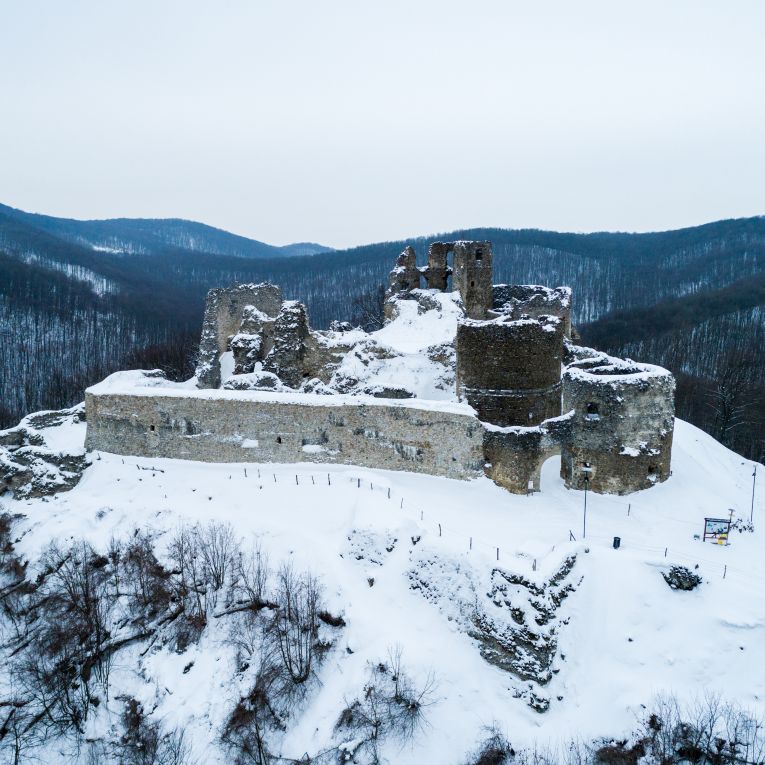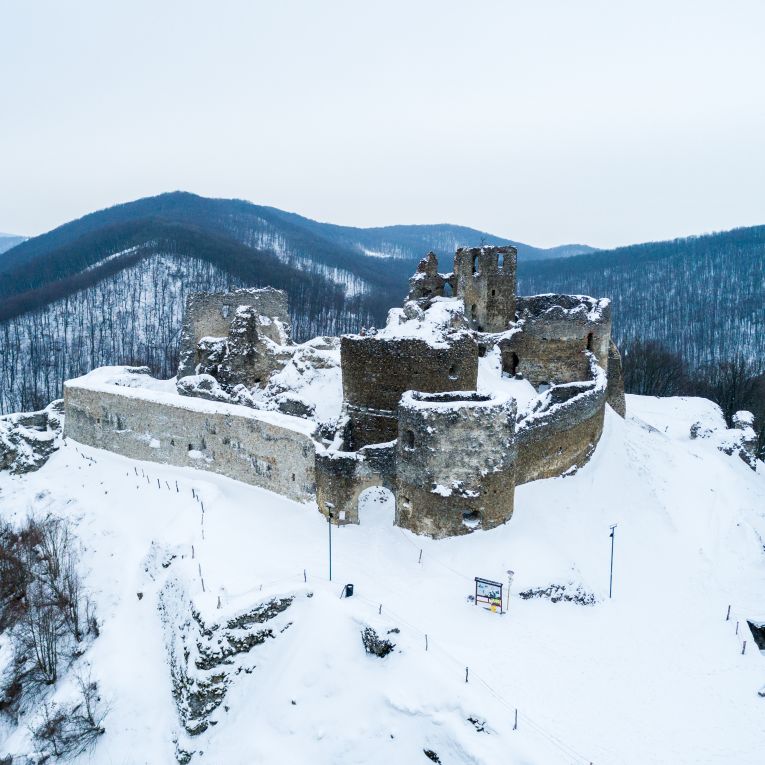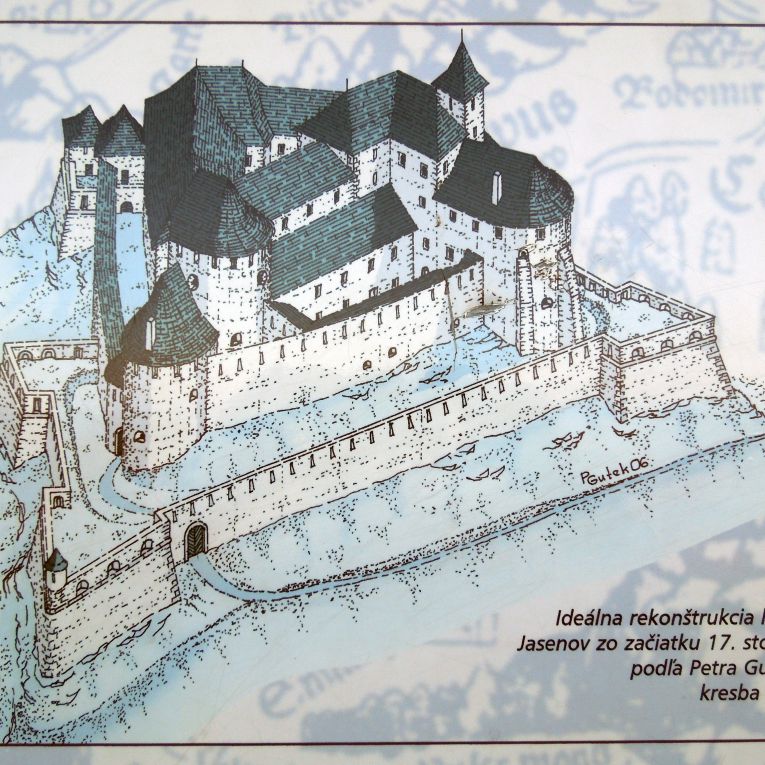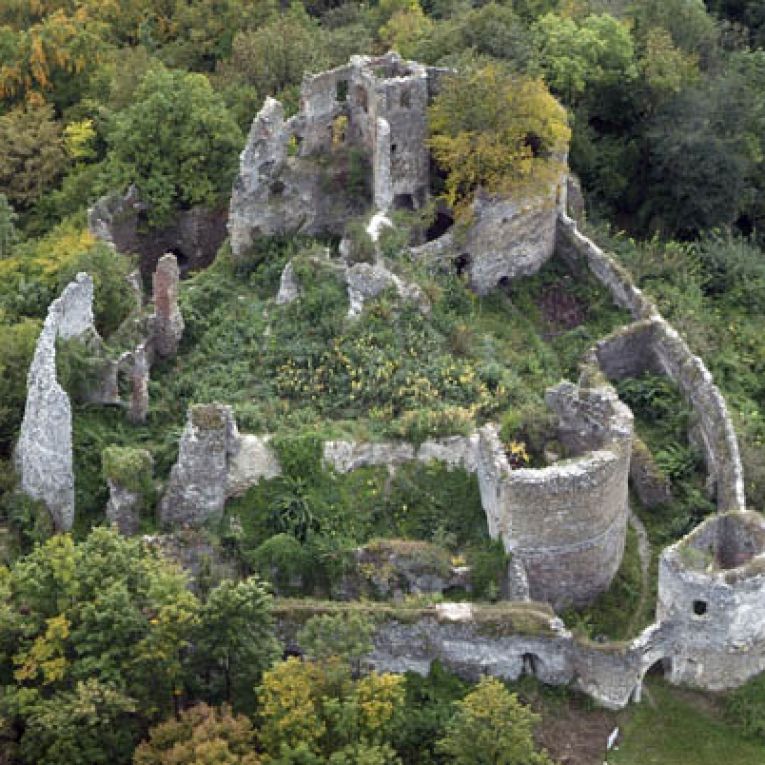







Jesenov Castle was built at the turn of the 13th and 14th centuries. This castle, together with the nearby castle in Brekov, guarded the trade route to Poland. In 1321 it was received by the Drugeth family.
Jesenov Castle was built at the turn of the 13th and 14th centuries. This castle, together with the nearby castle in Brekov, guarded the trade route to Poland. In 1321 it was received by the Drugeth family. Initially, the castle had a triangular shape. There was a square tower in one corner, a round tower in the other, and a residential building in the third. The whole thing was surrounded by a solid wall.
At the turn of the 15th and 16th centuries, the castle was significantly expanded. A second ring of walls was added with two cannon towers on the west side. The round tower was also adapted to artillery fire. The outer walls were equipped with a system of arrowslits.
In the 17th century, the castle, another expansion, results in five modern bastions protruding beyond the walls. The castle then served as the treasury of the Drugeth family. In 1644, the Habsburg loyal Drugeth was besieged by the army of Jerzy Rákóczy. Jesenov Castle was captured and burnt. From that moment on, its fall begins.
The mid-16th century was dramatic for the castle, when Gabriel Drugeth founded a forgeries mint there. After complaints from Poland and Hungary, the Royal Chamber ordered the forger - the culprit - to be arrested. He was tried for this act and executed in the market square in Prešov.
Currently, only ruins remain of the castle.